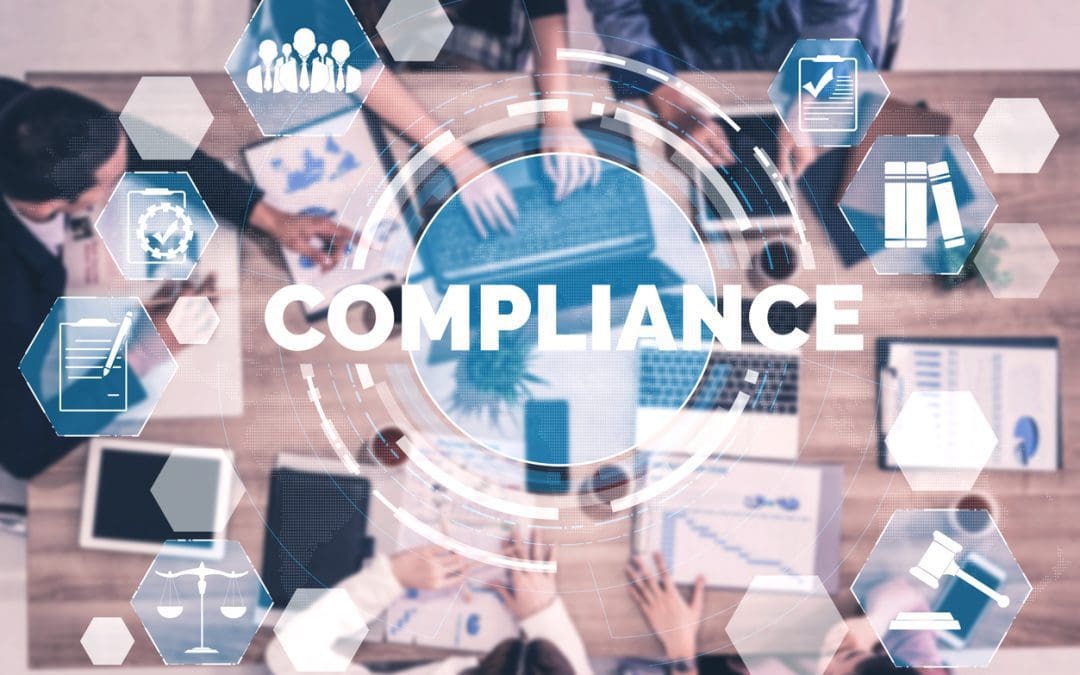Managing and Achieving NIST Compliance in the Industry Today
As cyberattacks evolve in scope and scale within all industries, it has become crucial to provide cybersecurity programs for all businesses and organizations. In order to protect all consumer data, lawmakers are enacting legislation to protect personal information. The National Institute of Standards and Technology (NIST) is a non-regulatory agency under the US Department of Commerce and it develops security standards that apply in various industries.
Achieving NIST Compliance means that you are complying with the requirements of one or more NIST standards. These standards are based on best practices from several security documents, organizations, and publications. They are designed as a framework for federal agencies and programs with security measures in place. Let’s take a closer look at who NIST is and how organizations can achieve compliance through competency management.
Who is the National Institute of Standards and Technology?
The National Institute of Standards and Technology is a non-regulatory government agency that develops technology, metrics, and standards to drive innovation and economic competitiveness at U.S.-based organizations in the science and technology industry. As part of this effort, NIST produces standards and guidelines to help federal agencies meet the requirements of the Federal Information Security Management Act (FISMA). NIST also assists those agencies in protecting their information and information systems through cost-effective programs.
Specifically, NIST develops Federal Information Processing Standards (FIPS) in congruence with FISMA. The Secretary of Commerce approves FIPS, with which federal agencies must comply – federal agencies may not waive the use of the standards. NIST also provides guidance documents and recommendations through its Special Publications (SP) 800-series. The Office of Management and Budget (OMB) policies require that agencies must comply with NIST guidance unless they are national security programs and systems.
What are the benefits of NIST Compliance?
One critical benefit of NIST compliance is that it assists in ensuring that the infrastructure of an organization is secure. It can also lay the foundational protocol for businesses to follow when achieving compliance with particular regulations.
NIST compliance is not just for federal agencies or manufacturers and service providers that do business with the government. Even small and medium-sized businesses benefit from being NIST compliant.
NIST Cybersecurity Framework is voluntary guidance, based on existing standards, guidelines, and practices for organizations to better manage and reduce cybersecurity risk. In addition to helping organizations manage and reduce risks, it was designed to foster risk and cybersecurity management communications amongst both internal and external organizational stakeholders.
Companies that are non-compliant or that fail to maintain NIST compliance, may deal with contract termination or may put the company in legal trouble.
What audits can come from NIST?
A NIST Assessment usually involves two parts to determine adherence to a framework. The first part is a NIST Audit to establish the level of conformance to a standard. The evaluator performing the NIST Audit will work from the guidance to ensure the organization has the required controls and standards in place. The second phase of the NIST Audit is to perform a risk analysis on the outcome of the audit.
An audit reviews all policies, procedure documents, and organization charts. Key reports are used to manage the effectiveness, efficiency, and process success of the organization.
Note – NIST has many standards. One audit will not assure compliance with all of them. . A NIST 800-153 audit also assures compliance with NIST 800-171, which is a subset of NIST 800-153.
How can Competency Management make achieving NIST Compliance easier and more reliable?
Considerable time and resources are needed in order to achieve NIST compliance. Achieving compliance certification is only half the battle. Organizations must maintain and track compliance over time.
At CABEM we understand the difficulties organizations face in managing and tracking credentials and employee performance. We created our competency management software to address these challenges. Our Competency Manager software can be used to manage employee competency as it tracks credentials, stores documents sends automated alerts, and conducts training and assessments. Our system allows for all day-to-day learning, whether experiential, mentorship, or peer to peer, to be captured and documented formally within a software system.
CABEM Technologies has created and evolved the Competency Manager to help companies manage their compliance as it relates to the NIST standards. The Competency Manager is meant to plug directly into situations where organizations need to abide by NIST Standards. It easily tracks your employees’ compliance and ensures an organization is ready for an audit from an authoritative governing body as it relates to NIST Compliance. Competency Manager easily configures the tool to new standards as NIST continues to grow, evolve, and add additional requirements. If you are ready to add the benefits of competency management to your business this year, click here to learn about our product or contact us.

